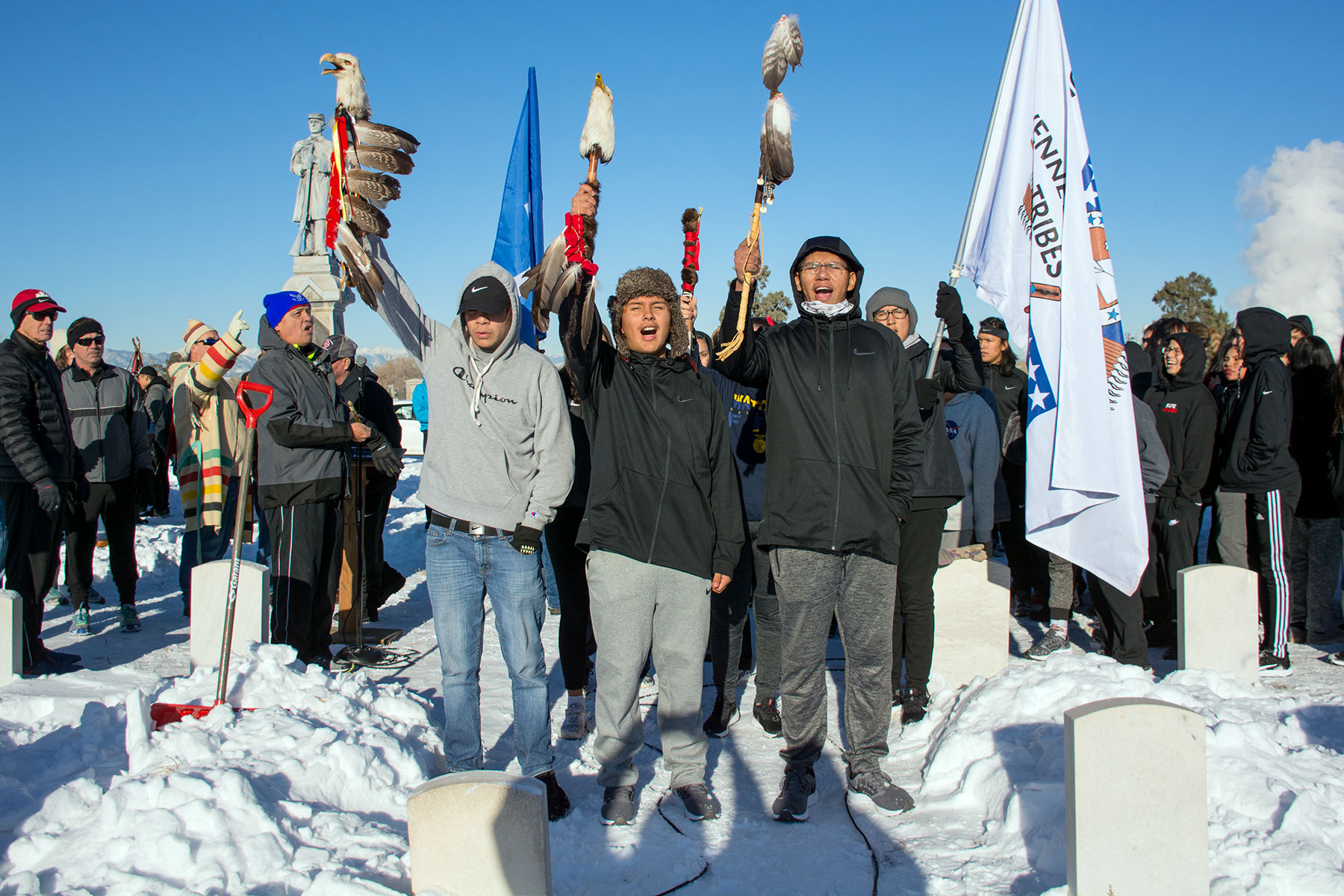In Partnership with Cheyenne and Arapaho Tribes of Oklahoma, Northern Arapaho Tribe of Wyoming, and Northern Cheyenne Tribe of Montana, the History Colorado Center in Denver is developing a major exhibition to share the history of the Sand Creek Massacre with Cheyenne and Arapaho voices.
The National Endowment for the Humanities (NEH) announced this week that it is awarding $400,000 to support a new, long-term exhibition at the History Colorado Center that recounts the deadliest day in Colorado history – the 1864 atrocity known as the Sand Creek Massacre – with the voices of Cheyenne and Arapaho tribal members. Others may lend support for this exhibition via historycolorado.org/donate or philanthropy@state.co.us, and follow its progress in History Colorado’s online digest.
The NEH is awarding a Public Humanities Projects grant for the exhibition, which will be installed on the top floor of the History Colorado Center in downtown Denver for at least five years. Grant funds will support ongoing tribal consultation, further research, and exhibition design. The exhibition will reflect a partnership process now in its eighth year between History Colorado and three tribal groups: the Northern Cheyenne Tribe of the Northern Cheyenne Reservation, the Northern Arapaho Tribe, and the Cheyenne and Arapaho Tribes of Oklahoma. Participating tribal historians and descendants include Otto Braided Hair (Northern Cheyenne), Fred Mosqueda (Cheyenne and Arapaho Tribes of Oklahoma), Ben Ridgely (Northern Arapaho), Gail Ridgley (Northern Arapaho), and Chester Whiteman (Cheyenne and Arapaho Tribes of Oklahoma).
This exhibition not only looks into the past, but also explores the ongoing generational impacts of this traumatic event. When it opens, it will be the only museum exhibit in the U.S. to share the massacre’s history from the viewpoint of Cheyenne and Arapaho tribal members. Along with all other visitors to the History Colorado Center, school-aged children on field trips – approximately 49,000 students made museum visits in the year prior to the pandemic – will have the option to access the exhibition’s carefully presented, powerful content.
“History is the recognition of all of our experiences, some which are painful to face. It’s critical to listen to the voices of the Cheyenne and the Arapaho Nations to hear their stories, and to begin to understand how we can build a better future for all our children,” said Lt. Governor Dianne Primavera, chair of the Colorado Commission of Indian Affairs. “I’m grateful to the NEH for this grant and to the partners and consultants who are doing the important work of creating this educational experience.”
“We have to acknowledge our history – including the darkest chapters – in order to heal and move forward,” said U.S. Senator John Hickenlooper, who as Governor formally apologized for the Sand Creek Massacre on behalf of the State of Colorado. “This exhibit will ensure we never forget the horrific atrocity at Sand Creek, and by so doing help prevent us from repeating it.”
“We’ve had difficult times in the past with History Colorado,” said Otto Braided Hair. “This grant shows commitment and dedication from History Colorado.”
“It will include information about the lives of the Cheyenne and Arapaho people before the massacre, life today and our efforts to remember the massacre,” said Fred Mosqueda. “This NEH funding will help with this important work.”
“This grant is really good news,” said Gail Ridgley. “It’s great to work with Dr. Kelman and Dr. Roberts again – they are walking textbooks on the Sand Creek Massacre.”
“The Sand Creek Massacre exhibition will demonstrate that all people in the United States, tribal and non-tribal, can work humbly together to remember and begin to heal from the Sand Creek Massacre,” said Shannon Voirol, director of exhibit planning at History Colorado. “It will also offer universal, timely lessons that fear, racism, and stereotyping can and do lead to catastrophic consequences.”
In 2012, when the History Colorado Center first opened its doors in Denver, it included an exhibition on the Sand Creek Massacre. However, the exhibition was developed without adequate input from tribal representatives and leadership and was closed shortly after opening. Since then, History Colorado staff have been building and reconnecting stakeholder relationships around this subject matter. They have also cultivated successful community relationships for several other long-term exhibitions at the History Colorado Center: Borderlands of Southern Colorado; El Movimiento: The Chicano Movement in Colorado; and Written on the Land: Ute Voices, Ute History. Ongoing dialogue has resulted in these culturally sensitive projects earning community buy-in and attendance from the people and communities that they feature, which is a major goal of the Sand Creek Massacre exhibition.
Additional consultants and partners for the work include Dr. Laurie Arnold (Sinixt Band of the Colville Confederated Tribes), director of Native American Studies at Gonzaga University; Dr. Ari Kelman, author of A Misplaced Massacre: Struggling Over the Memory of Sand Creek (Harvard, 2015); and Dr. Alexa Roberts, the first Superintendent of the Sand Creek Massacre National Historic Site.

